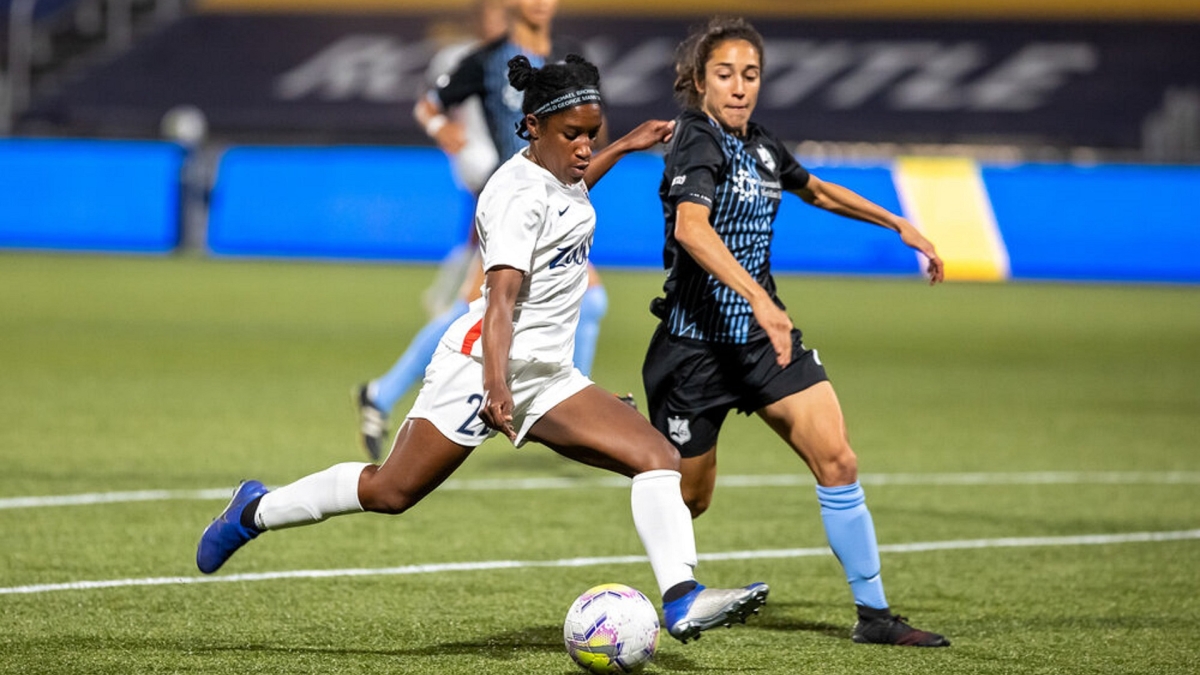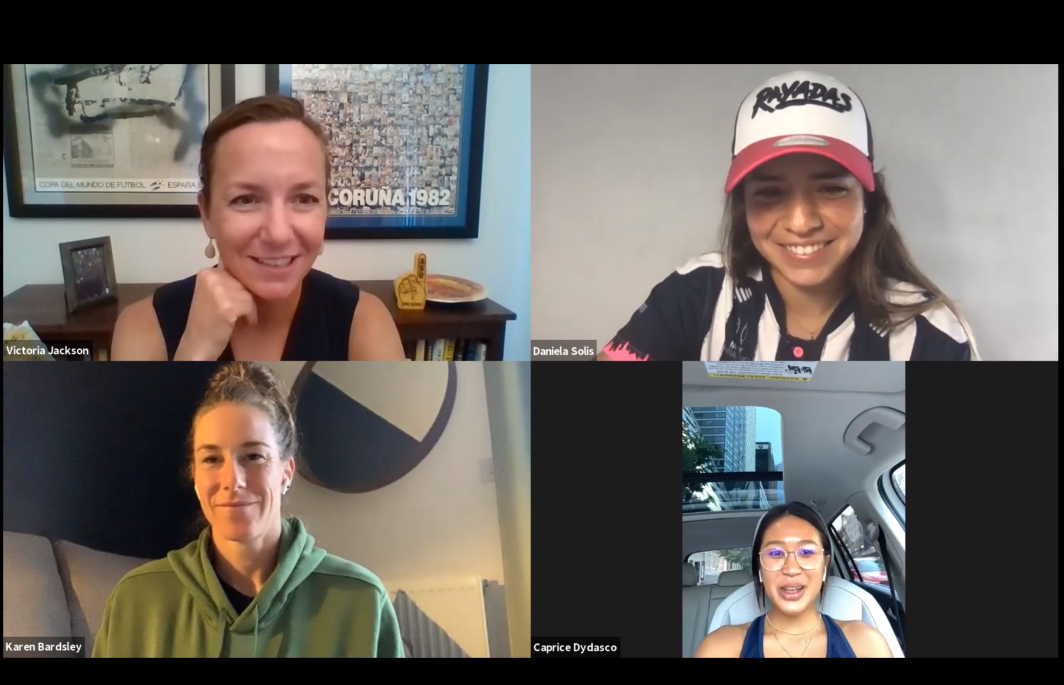Women's soccer: Building a future for the next generation — on and off the pitch

Over the past several years, women’s soccer has seen meteoric global growth.
The 2019 Women’s World Cup was an international hit, celebrated at a time when many countries were developing stronger domestic leagues on the back of a generation-long expansion of the sport at the youth level. In its 2020 Sports Industry Outlook, Deloitte named the rise of women’s sports as one of five biggest trends affecting the industry, with soccer (or, as the rest of the world calls it, football) as a key driver.
And then the pandemic hit.
“It was this cruel irony,” said Victoria Jackson, a sports historian and professor at Arizona State University.
But the surprise is that, despite the pandemic, “women's sports around the world right now are continuing their rise,” said Jackson, a former professional runner and track and field athlete for ASU and UNC.
Then again, if you consider the history of generations of female athletes enduring in the face of immense challenge, perhaps it’s not so surprising after all.
“Hustle is in the DNA of women athletes,” said Jackson, who won the NCAA national championship for the Sun Devils at 10,000 meters. “It's gratitude, it’s responsibility, and it's hustle and joy and innovation … We can take on this pandemic,” she said.
In ASU’s most recent Convergence Lab event, Jackson caught up with three professional soccer players who embody hustle, responsibility and innovation, both on and off the pitch: Caprice Dydasco of Sky Blue FC, Karen Bardsley of Manchester City and Daniela Solis of Rayadas de Monterrey.
Victoria Jackson, a sports historian at ASU and former professional runner, discusses the future of women's soccer with Caprice Dydasco of Sky Blue FC, Karen Bardsley of Manchester City and Daniela Solis of Rayadas de Monterrey. Image courtesy of Mia Armstrong
The athletes, all of whom have played on national teams at the youth and/or senior level, discussed their respective journeys to the top of the global game.
“I was pretty much born on the soccer field,” said Dydasco, who grew up in Hawaii in a family of soccer players. Dydasco, currently working through an ACL tear, has made it through a number of injuries throughout her career.
“Injuries have been part of my nightmare, but also have made me stronger,” she said.
Dydasco’s resilience in the face of injury, said Jackson, is one example of the many lessons of sport that athletes carry with them off the field or court or track: a tolerance for discomfort, for difficulty, for pain, and a willingness to do the hard work to get beyond it.
Bardsley grew up in between goalposts in California before eventually going to play in England, her parents’ home country.
The position of goalkeeper “probably allowed me to be a bit more myself because I wasn't afraid to be physical, get in the way of the ball, roll around in the dirt and just dive around, be a bit unique,” she said.
Solis, who grew up playing soccer in the U.S. before playing at the collegiate level for the renowned Tecnológico de Monterrey and the professional level for the Rayadas, has always found that sport has opened doors for her educationally, and her education has, in turn, opened more doors for her in sport.
“You have to have an education to back you up. That’s always been my motto,” she said.
The players have witnessed and driven positive change in their sport, and they’re dedicated to building a better future for the athletes that will come after them. Jackson, who is writing the very history these women are now making, is optimistic about the future, even in the face of unprecedented challenges.
“Women have always brought creativity and joy to the sports space, and despite efforts to push them to the sides and the margins … they’ve continued to play,” she said.
“If we tap into what we do well and ignore all the distractions and people trying to fight what we're building,” Jackson said, “we're going to build something …incredible, and those other sports leagues are going to try to replicate what the women build themselves.”
Upon finishing her own career on the pitch, Dydasco hopes to return to Hawaii to build a training facility to help young athletes develop their skills and open doors for them to be discovered by college coaches. She’d also like to establish an injury prevention program.
Bardsley, too, hopes to create an environment where young players can find mentors, coaches, teammates and role models that they can see themselves in, challenging harmful stereotypes and misperceptions in the process.
“I think my ultimate goal is parity, not only just on the pitch, but in the boardroom, in society,” she said.
Solis sees tremendous opportunity for up-and-coming athletes in the young professional women’s league in Mexico, and her biggest goal right now is “opening that path for a new generation” to be able to live off the game. Her advice for that generation? “Be stubborn and just strive for what you want, because dreams come true.”
Bardsley and Dydasco concurred.
“Just persist. There are moments when you will have extreme highs, and you will have extreme lows, but it's the people who choose to remain and keep fighting that eventually get to the top,” Bardsley said.
“Be yourself. There is no one just like you on the field. So know your strengths and weaknesses, and keep working weaknesses. But also don't be afraid to ask for help,” Dydasco added.
Watch the full event on YouTube. Sign up for Convergence Lab’s next event, about the future of urban mobility, on Sept. 22.
Written by Mia Armstrong, ASU Convergence Lab. Top image: Courtesy of Pixabay.
More Local, national and global affairs

Arizona PBS is now free to stream for Prime Video viewers in the US
Arizona PBS is now available for streaming on Amazon Prime Video. A new partnership between PBS and Amazon brings the station’s primary, high-definition broadcast channel, along with the 24/7 PBS…

First-ever Taiwan Symposium at Thunderbird celebrates business, cultural connections
The investment by TSMC and other Taiwanese corporations in Arizona will reap dividends not only in thousands of new jobs but also in strengthened cultural connections and new methods of…

Study shows that trust drives successful market economies — but not in the way you may think
From fueling our cars to fulfilling daily coffee habits, the average U.S. cardholder makes 251 credit card transactions per year, according to Capital One.Each of these transactions are built…


